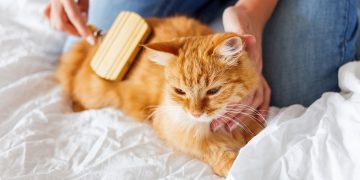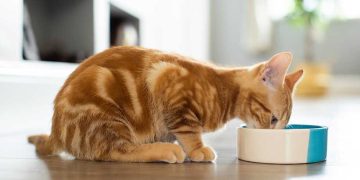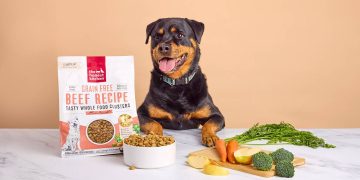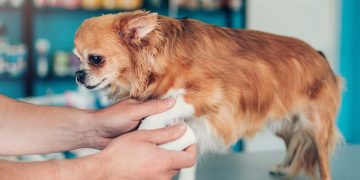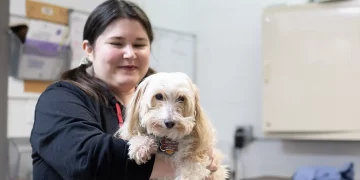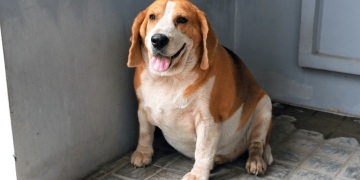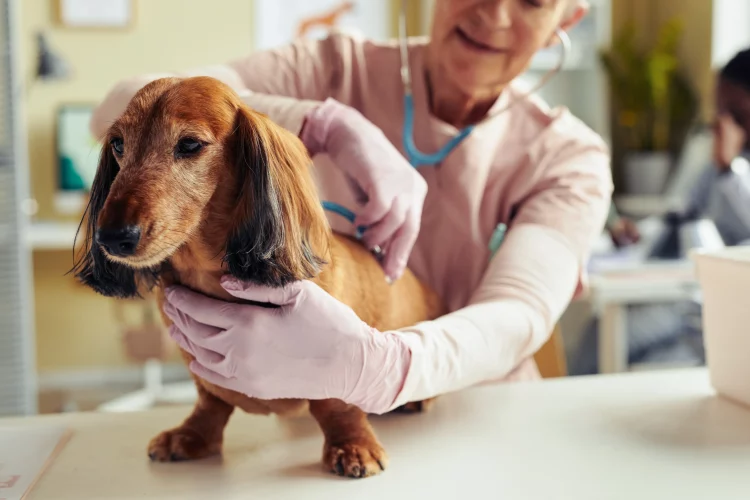Understanding the Stomach Behind the Symptoms
Feeding a pet with a sensitive stomach can feel like walking through a nutritional minefield. One day your dog seems fine, the next they’re bloated and lethargic. Your cat enjoys a new kibble only to vomit it up hours later. For loving pet parents, these reactions are frustrating, scary, and confusing. The digestive system is a finely tuned machine—and when something goes wrong, your pet speaks through symptoms: diarrhea, vomiting, gas, itchy skin, or appetite loss.
The first step to managing a sensitive stomach is to understand what type of issue you’re dealing with. Is it a true food allergy, a temporary intolerance, or an underlying gastrointestinal condition like gastritis or IBD? Each requires different strategies, but the good news is that most cases can be dramatically improved through dietary changes—without needing to overhaul your entire feeding approach.
The Three Faces of Food Sensitivity
Pets with sensitive stomachs typically fall into one of three categories, each with their own treatment path:
1. Food Intolerance (Digestive Sensitivity)
This is the most common cause of tummy upset in pets. It’s not an allergy, but a poor reaction to certain ingredients—often proteins, fats, grains, dairy, or synthetic additives. Common symptoms include loose stools, excessive gas, gurgling stomach sounds, or mild vomiting. These pets may do fine on one food but react to another brand with the same main ingredients due to subtle formulation differences.
2. Food Allergy (Immune Reaction)
True food allergies involve an immune system overreaction, often to proteins like chicken, beef, or fish. Symptoms are usually more skin-focused: itchy paws, ears, or face; chronic ear infections; or red, inflamed skin. Digestive symptoms like vomiting or diarrhea may occur but are less dominant. Allergies are long-term and require strict ingredient avoidance.
3. Gastrointestinal Disease (Underlying Condition)
Some pets suffer from chronic inflammation of the gut lining, such as in colitis, gastritis, or IBD. Others may have pancreatic or liver disorders. These cases often present with persistent vomiting, weight loss, or bloody stool. A vet diagnosis is crucial here, but diet still plays a major supportive role alongside medication or supplements.
Simple Clues to Help Narrow It Down
Before diving into special diets or supplements, you can do a bit of safe detective work at home. Here’s how:
- Track the timing: If symptoms appear a few hours after eating, it may be a food intolerance. If they’re chronic, even with consistent food, think deeper issue or allergy.
- Examine the stool: Watery diarrhea suggests poor digestion; mucus or blood points to colitis; soft but formed stool may be food-related.
- Look at the skin: Chronic itchiness with GI signs could mean allergy. No itching? More likely intolerance.
- Check for patterns: Is the upset always tied to certain proteins? Does it get worse with fatty treats? Does canned food do better than dry?
Keep a simple food journal of what your pet eats, how much, when, and any symptoms. This log will become your best tool for identifying triggers and discussing solutions with your vet.
The Elimination Diet: Your First Reset Tool
When in doubt, a basic elimination diet is a gold standard. The idea is simple: feed your pet one new protein and one new carbohydrate for 6–8 weeks—nothing else. That means no treats, table scraps, flavored chews, or supplements unless approved.
Examples of elimination combos:
- Duck + sweet potato
- Turkey + pumpkin
- Rabbit + quinoa
- Fish + green peas
Over time, you can reintroduce ingredients one at a time to identify which cause flare-ups. This method is especially useful for suspected allergies or chronic intolerances. Home-cooked meals are ideal for total control, but limited-ingredient commercial diets also exist for convenience.

Top Gut-Friendly Ingredient Substitutions
If your pet reacts to certain staples, try these gentle alternatives:
- For chicken intolerance: Switch to turkey, duck, or rabbit
- For beef issues: Try lamb, venison, or bison
- Instead of corn/wheat: Use oats, quinoa, or sweet potato
- For lactose sensitivity: Avoid cheese and use lactose-free yogurt sparingly
- Instead of peanut butter (often triggers): Try pumpkin puree or coconut oil in moderation
When introducing a new ingredient, go slow. Add just a spoonful per meal for 2–3 days before increasing. If symptoms return, you’ve likely found a trigger.
The Role of Fiber and Moisture
For pets with chronic loose stools, constipation, or bloating, fiber and water content can make a big difference.
- Pumpkin (plain canned) is a go-to for dogs and cats alike. It regulates digestion, soothes inflammation, and adds prebiotic value.
- Psyllium husk or oat bran (in small doses) helps with irregular stool.
- Canned or wet food adds essential moisture, especially for cats prone to dehydration-related stomach issues.
- Bone broth (unsalted and homemade) supports gut lining health and improves food palatability for picky eaters or those recovering from a flare-up.
Hydration is often overlooked but critical. Encourage water with pet fountains, ice cubes, or food toppers.
Supplements That Support a Sensitive Gut
Certain natural additives can help maintain or restore gut balance, especially when used alongside a clean diet:
- Probiotics: Species-specific strains (like Enterococcus faecium or Lactobacillus acidophilus) balance gut bacteria and reduce inflammation.
- Digestive enzymes: Especially helpful for older pets or those recovering from GI infections.
- Slippery elm: A plant fiber that soothes the stomach lining and helps with both diarrhea and vomiting.
- L-glutamine: An amino acid that supports intestinal cell regeneration, often used in IBD or leaky gut protocols.
Always consult your vet before starting new supplements, particularly in pets with preexisting medical conditions.
How to Transition Diets Without Causing More Upset
Even the perfect food can trigger problems if introduced too fast. Here’s a safe transition timeline:
- Days 1–2: 75% old food, 25% new
- Days 3–4: 50/50 mix
- Days 5–6: 25% old, 75% new
- Day 7 onward: 100% new
If at any point your pet shows GI symptoms, pause or revert a step until stability returns. For pets with known sensitivities, take 10–14 days to complete the switch.
Daily Habits That Protect a Sensitive Gut
Beyond what you feed, how you feed matters too:
- Keep meal times consistent: Regular schedules help regulate digestive enzymes.
- Limit treats: Even healthy snacks can disrupt a fragile gut. Stick to 10% of daily calories.
- Avoid table scraps: Rich, fatty, or seasoned human food can trigger vomiting or diarrhea.
- Use slow feeders or puzzle bowls: Fast eating increases air intake, leading to bloating and regurgitation.
- Watch for stress: Emotional distress (new environment, travel, changes at home) can trigger digestive upset. Provide a calm space and routine.
When to Call the Vet
Sometimes, no matter how careful you are, the signs point to something deeper. Seek professional advice if:
- Vomiting or diarrhea lasts more than 48 hours
- You see blood in stool or vomit
- Your pet refuses to eat for more than a day
- There’s rapid weight loss or lethargy
- Bloating or abdominal pain becomes severe
- Skin symptoms persist despite diet changes
A full vet exam, bloodwork, or GI panel may be needed to rule out parasites, infections, pancreatitis, or chronic illness. Diet helps—but sometimes diagnosis saves lives.
Conclusion: Gentle Food, Better Days
Feeding a pet with a sensitive stomach doesn’t mean giving up variety or nutrition. It means tuning in more deeply—watching patterns, trying simple swaps, and approaching meals with mindfulness. Whether your pet is reacting to a single ingredient or managing chronic inflammation, the right diet can become their medicine, comfort, and source of strength.
You don’t need expensive prescription food to start making changes. A well-chosen protein, a touch of fiber, a calm environment, and a bit of trial and error can return peace to mealtime and comfort to the belly. And in the process, you’ll build trust—the kind of bond that starts with a bowl and grows into lasting care.



